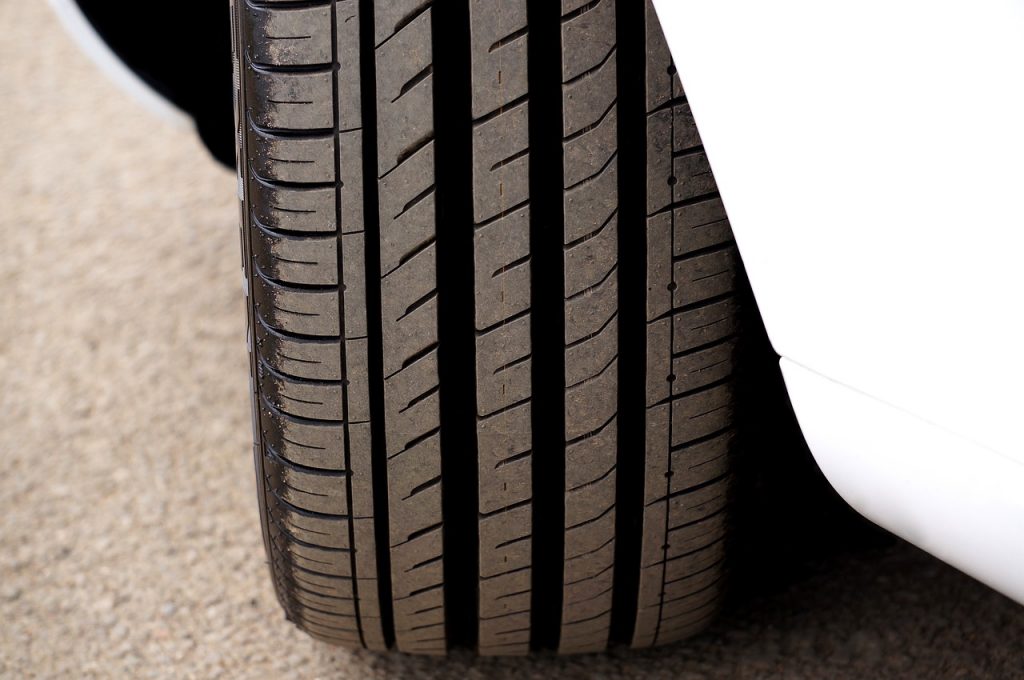What’s your favourite way of spending your hard-earned cash? For most of us, it’s certainly not a set of new tyres. With the exception of dedicated car enthusiasts, tyres are just a necessary (and expensive) evil. So, assuming that you’d rather spend your readies on something more interesting than rubber hoops, let’s look at how you can make your tyres last a bit longer.
1. Avoid buying the cheapest tyres.
If you want to spend less on tyres, don’t buy the cheapest ones. That may sound bonkers, but there’s solid logic behind it.
The fact is that generally speaking, cheap tyres don’t last very long. Their lifespan can be several thousands of miles less than higher quality tyres, which for a typical driver means that they need to be replaced months sooner. The reason is simple: cheaper tyres lack the incredibly durable materials developed by premier companies and used in more expensive tyres. Therefore, any advantage in the purchase price of budget tyres is more than offset by their accelerated wear.
However, that doesn’t mean that you should automatically buy the most expensive tyre. Very pricey tyres ones have often been engineered for maximum performance, not optimal durability.
To find which tyres are going to give you the biggest bang for your buck, you’ll have to do your own research. There are plenty of fantastic websites that run comparisons, such as Auto Express or Tyre Reviews. Alternatively, find a garage that you can trust for a recommendation. In addition to hard-wearing premium tyres, there are also some very good mid-range tyres that provide amazing durability.
2. Slow down and anticipate.
Modifying your driving style can really extend your tyres’ lifespan. Accelerating, braking and cornering all result in tyre wear — just think about how much tread can get scrubbed off on a track day. Therefore, the less aggressively you do all three, the slower your tyres will wear. Obviously, the way to reduce the amount of braking you do is:
- leave more of a gap between you and the vehicle ahead
- read the road ahead, anticipating when you may need to slow down
Both strategies will increase your tyres’ lifespan and save on fuel.
3. Don’t under-inflate your tyres
Tyres are designed to operate most efficiently within a narrow range of pressures. Step anywhere outside of that and they will wear excessively quickly. For example, just dropping from a recommended rating of 34 psi to 31 psi could cost you 10% of the tyre’s lifespan.
When the tyre is underinflated, less of the vehicle’s weight is carried on the central part of the tyre and more on the stiff edges. These therefore wear disproportionately quickly. Under-inflation also causes the tyre to heat up more quickly, increasing the chances of a blow-out.
4. On the other hand…
To deal with the perils of under-inflation, it might be tempting to add a little bit more air than you need. Unfortunately, this works about as well as, “if I need 2500 calories a day, I’d better have 3,000 to be on the safe side.”
When you over-inflate tyres, too much of the vehicle’s weight falls on the central section. Predictably, this part then wears more quickly, again costing you miles and miles of use. Over-inflation may also compromise your car’s handling and ride comfort.
Checking your tyre pressure isn’t very exciting and often gets shoved down the bottom of your to-do list, but it’s a straightforward way to put money back into your pocket.
5. Get your suspension and alignment checked
There are a host of alignment and suspension issues that can cause excessive tyre wear. Examples include:
- Excess positive or negative toe angle. If your tyres show ‘feathering’ ( try stroking the tread bar to detect this — do it when no one’s watching!), it can be a sign of this type of misalignment.
- Positive camber and caster. These can lead to wear on the outer edge — though the culprit is more often cornering at speed.
- Worn shock absorbers. Wear to the shocks and struts allows the tyres to move too much, resulting in a ‘scalloped’ or ‘cupped’ wear pattern on the tyre.
There are plenty more where those came from. Really, alignment and suspension are something for an expert to look at. Also, remember that hitting one on the UK’s 900,000 potholes can send your alignment out of whack, so it’s a good idea to get it checked sooner rather than later.
The WVS blog covers a wide range of automotive topics, from the contentious to the light-hearted. We are an independent garage specialising in all the VW group marques, including Audi, Volkswagen, Skoda and SEAT. WVS provides services, repairs and MOTs, delivering a main dealer level of care at affordable prices. To book your vehicle in, or for any enquiries, get in touch.


